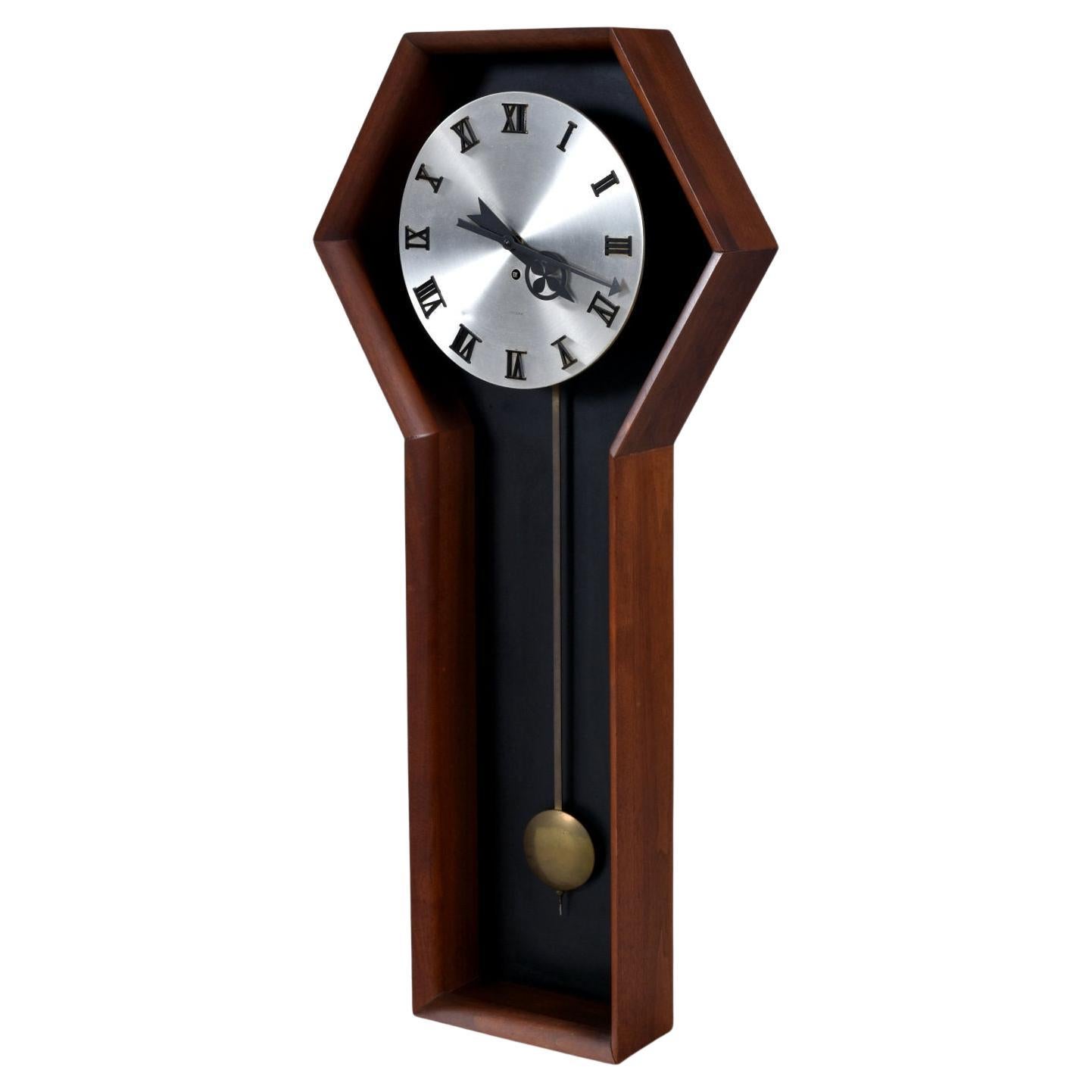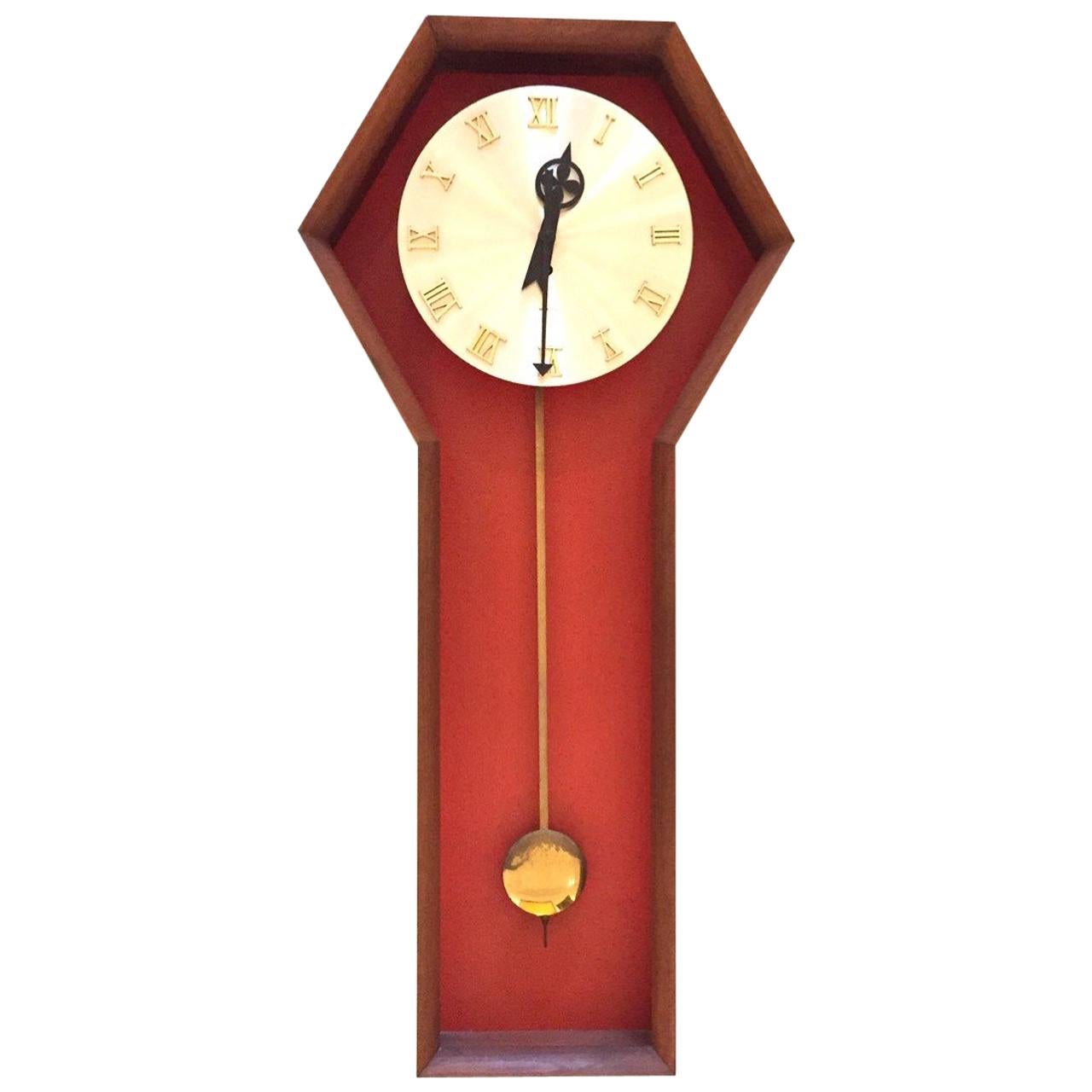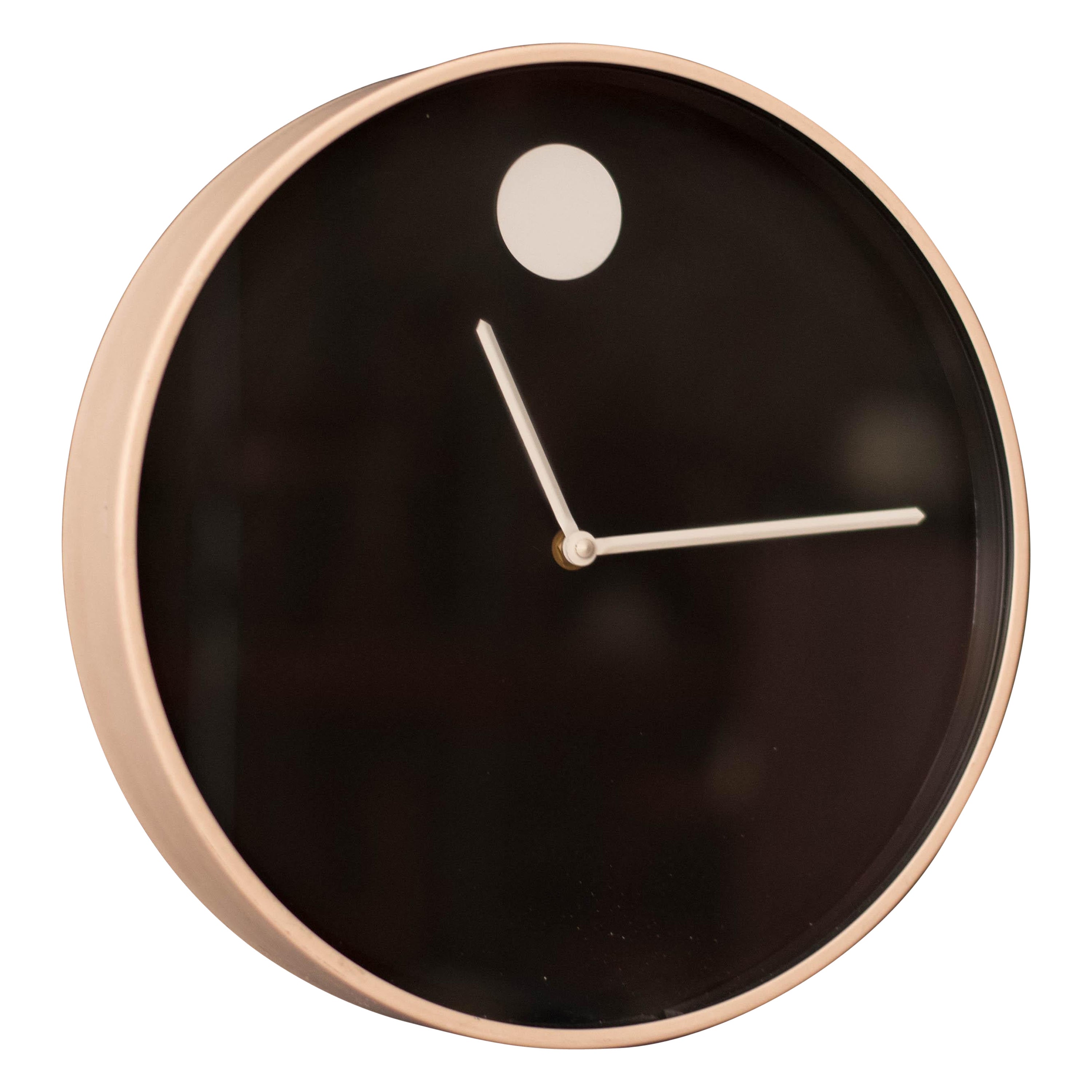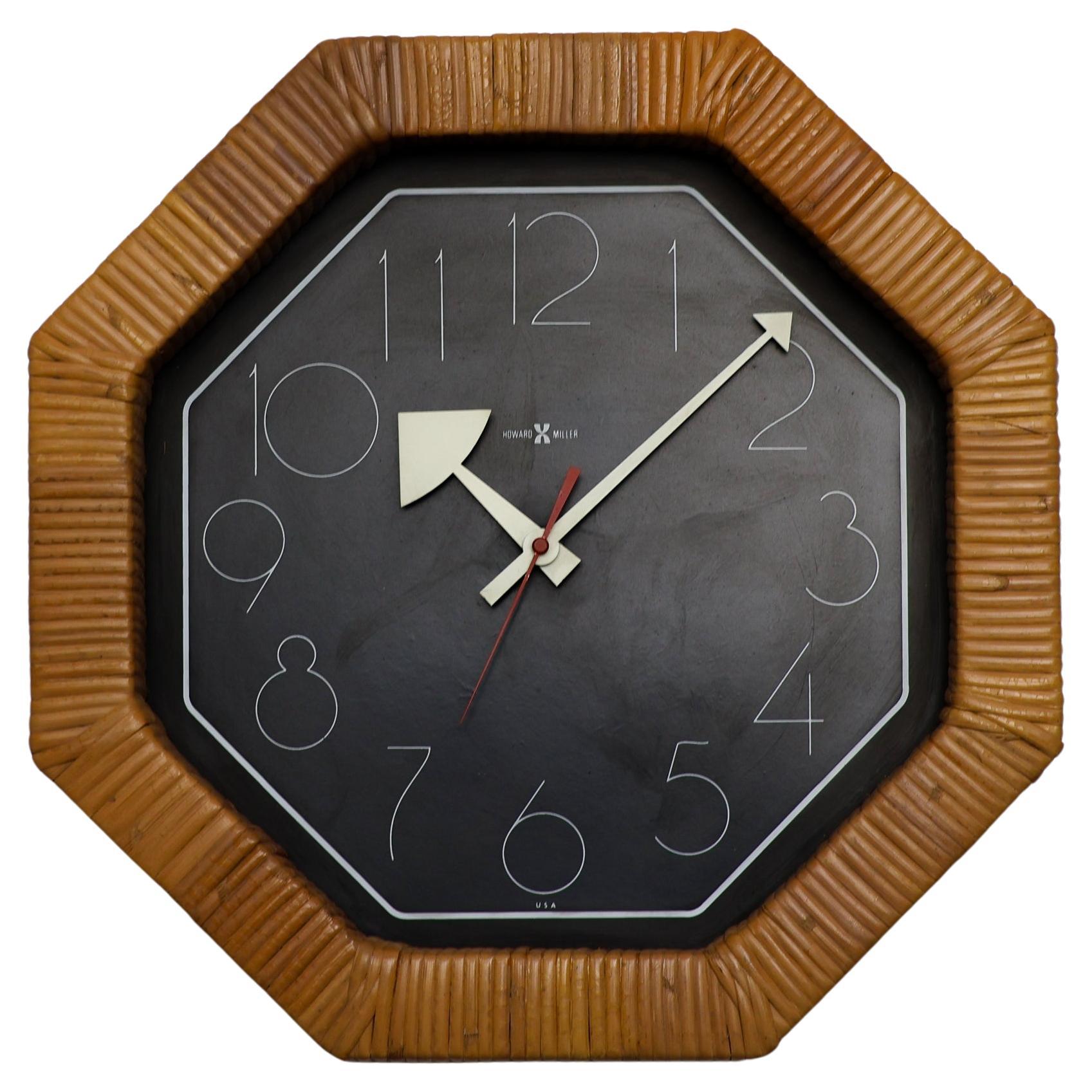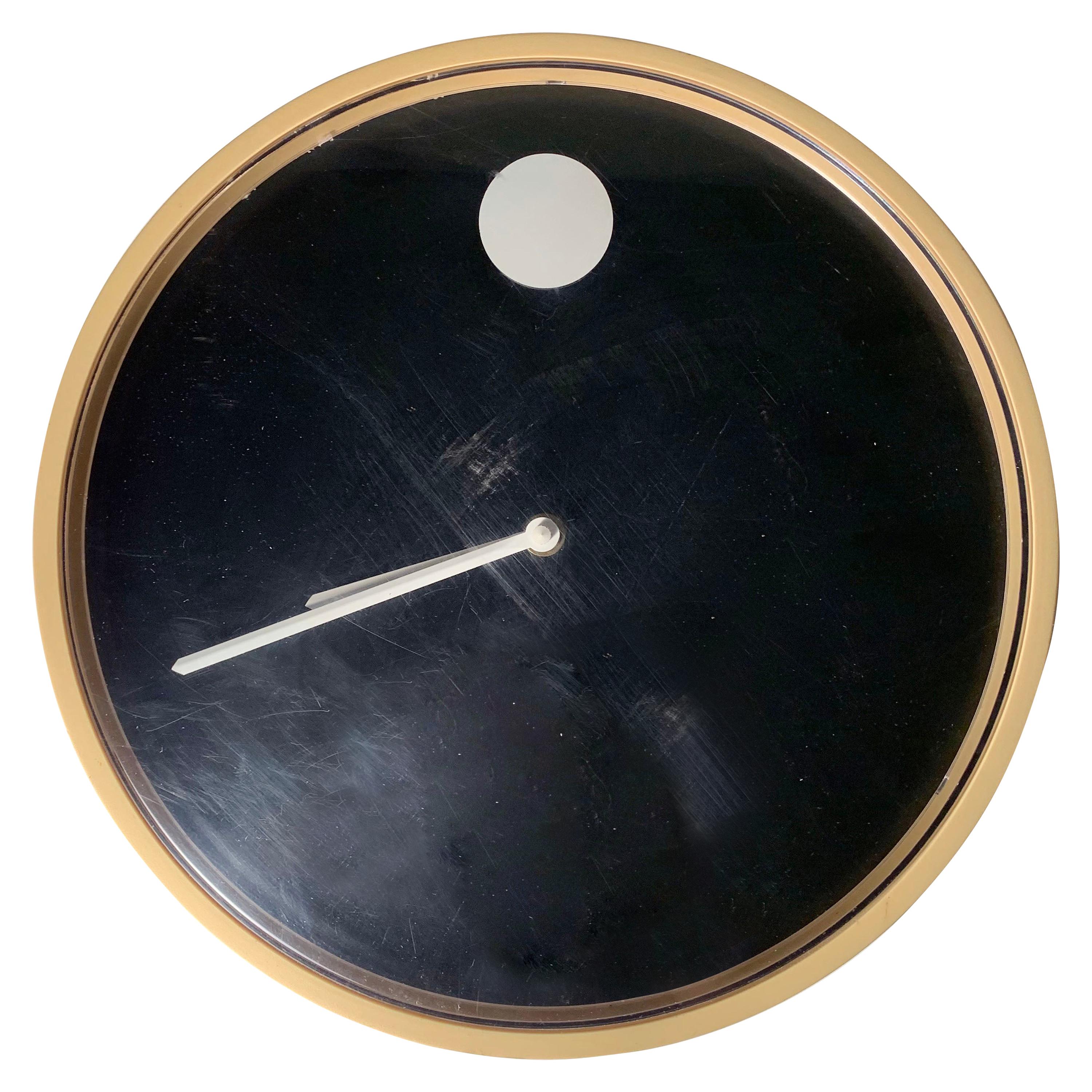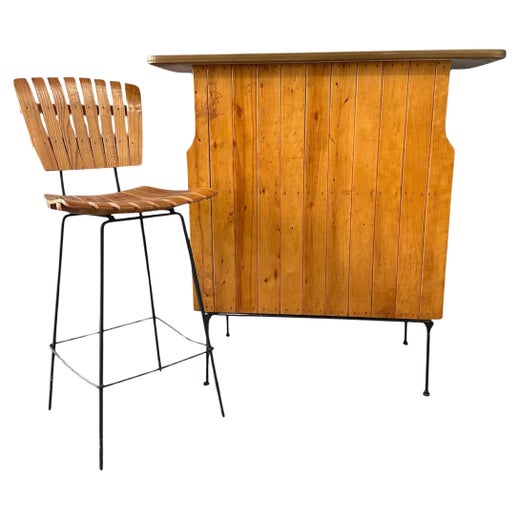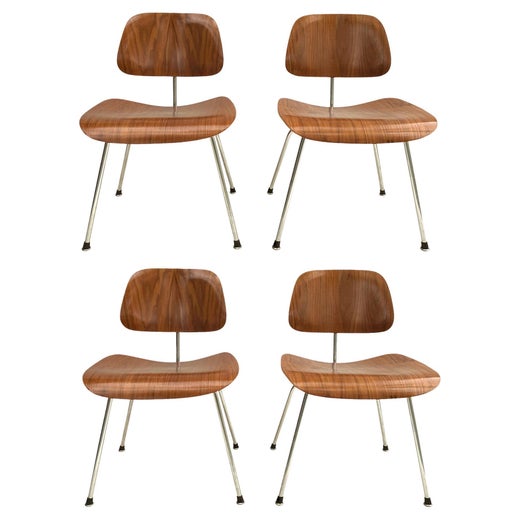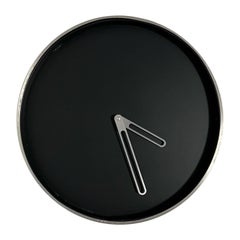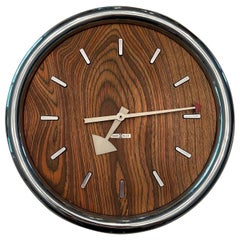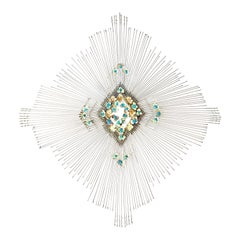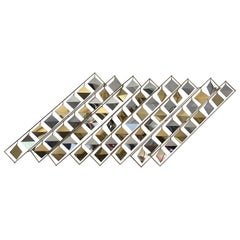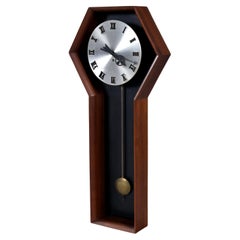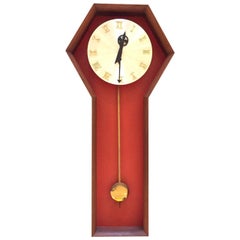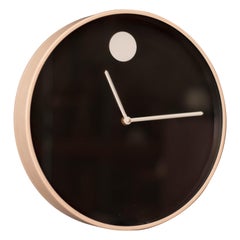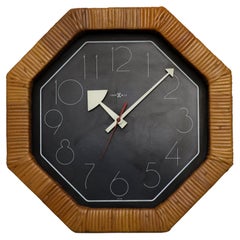1970s Arthur Umanoff for Howard Miller wall clock
About the Item
- Creator:Arthur Umanoff (Designer),Herman Miller (Manufacturer)
- Dimensions:Height: 20.5 in (52.07 cm)Width: 11.75 in (29.85 cm)Depth: 2.75 in (6.99 cm)
- Style:Mid-Century Modern (Of the Period)
- Materials and Techniques:
- Place of Origin:
- Period:
- Date of Manufacture:Circa 1970
- Condition:Wear consistent with age and use.
- Seller Location:Phoenix, AZ
- Reference Number:1stDibs: LU7089235402212
Arthur Umanoff
Though much of Arthur Umanoff's furniture is marked by a no-frills simplicity common in American mid-century modern design, his work is anything but one-note. Over the course of a prolific career, Umanoff designed everything from case pieces to candleholders to magazine racks to dining chairs in iron, leather, walnut, wicker and more. With furnishings for a broad range of manufacturers throughout the ’50s, ’60s, ’70s and early ’80s, Umanoff continued a thread of sculptural elegance and textural sensitivity through his designs.
After graduating from Pratt Institute in the early 1950s, Umanoff experimented mostly with wood furniture before landing a job at Post Modern Ltd, a New York manufacturer of wrought-iron furniture. There he produced furnishings that married wrought iron with wood and plastic, creating functional pieces free of utilitarian bulkiness.
Umanoff continued his experimentation with mixed materials through a partnership with Shaver Howard, for whom he designed wine racks in combinations of iron, leather and wicker.
When Shaver Howard bought Boyeur Scott, Umanoff conceived several furniture designs for the brand, including the 1964 Granada collection, whose curlicue iron bases, visible through glass tops, stand out as some of his most ornate and decorative work. Indeed, much of Umanoff’s oeuvre is far more simplistic, like iron-and-pine armchairs for The Elton Co. or low-backed, slatted-seat barstools with slender iron legs for Raymor.
Umanoff was fluent, too, in the more sumptuous modernism of the era: In the mid-1960s, he designed the 2405 and 4449 armchairs for Madison Furniture Industries. Popular in offices, the walnut-framed, leather-upholstered seats, which could have been mistaken for the seductive Scandinavian modern seating of the era, were reportedly the jumping-off point for Captain Kirk’s iconic seat on Star Trek.
Even as he is among the mid-century modern designers you may not know, with work across such a range of styles and manufacturers (most no longer in business), Umanoff, who died in 1985, leaves a legacy that is fascinatingly diverse and at times enticingly elusive, making his work intriguing objects for collectors.
Find vintage Arthur Umanoff bar stools, tables, benches and other furniture today on 1stDibs.
Herman Miller
No other business of its kind did more than the Herman Miller Furniture Company to introduce modern design into American homes. Working with legendary designers such as Charles and Ray Eames, George Nelson and Alexander Girard, the Zeeland, Michigan-based firm fostered some of the boldest expressions of what we now call mid-century modern style. In doing so, Herman Miller produced some of the most beautiful, iconic and, one can even say, noblest chairs, sofas, tables and other furniture ever.
Founded in 1923, Herman Miller was originally known for grand historicist bedroom suites: heavily ornamented wood furniture that appealed to a high-minded, wealthier clientele. The company — named for its chief financial backer — began to suffer in the early 1930s as the Great Depression hit, and D.J. De Pree, the company’s CEO, feared bankruptcy. In 1932, aid came in the form of Gilbert Rohde, a self-taught furniture designer who had traveled widely in Europe, absorbing details of the Art Deco movement and other modernist influences. After persuading De Pree that the growing middle class required smaller, lighter household furnishings, Rohde set a new course for Herman Miller, creating sleek chairs, tables and cabinetry that were the essence of the Streamline Moderne style.
Rohde died suddenly in 1944. The following year, De Pree turned to George Nelson, an architect who had written widely about modern furniture design. Under Nelson’s leadership, Herman Miller would embrace new technologies and materials and audacious biomorphic forms.
Some of the pieces the company produced are now emblems of 20th century American design, including the Eames lounge chair and ottoman and Nelson’s Marshmallow sofa and Coconut chair. Such instantly recognizable furnishings have become timeless — staples of a modernist décor; striking, offbeat notes in traditional environments.
Find a range of vintage Herman Miller office chairs, desks, coffee tables and other furniture on 1stDibs.
- ShippingRetrieving quote...Shipping from: Phoenix, AZ
- Return Policy
More From This Seller
View AllVintage 1970s American Post-Modern Wall Clocks
Aluminum
Vintage 1970s American Post-Modern Wall Clocks
Chrome
Mid-20th Century American Mid-Century Modern Mounted Objects
Brass
Vintage 1980s American Post-Modern Mobiles and Kinetic Sculptures
Brass, Chrome
Vintage 1980s Unknown Post-Modern Nesting Tables and Stacking Tables
Chrome
Vintage 1950s Unknown Mid-Century Modern Coffee and Cocktail Tables
Mahogany, Oak, Walnut
You May Also Like
Vintage 1960s American Mid-Century Modern Wall Clocks
Walnut
Vintage 1970s North American Mid-Century Modern Wall Clocks
Aluminum, Brass
Vintage 1970s American Mid-Century Modern Wall Clocks
Metal
Mid-20th Century American Mid-Century Modern Wall Clocks
Aluminum
Late 20th Century American Mid-Century Modern Wall Clocks
Plastic
Vintage 1960s American Mid-Century Modern Wall Clocks
Metal
Read More
The 21 Most Popular Mid-Century Modern Chairs
You know the designs, now get the stories about how they came to be.
A Guide to Herman Miller’s Most Iconic Furniture
The prolific manufacturer has partnered with many of the world’s top designers since opening its doors in 1923. Here are some of the company’s greatest hits, which helped transform the American home and office.
